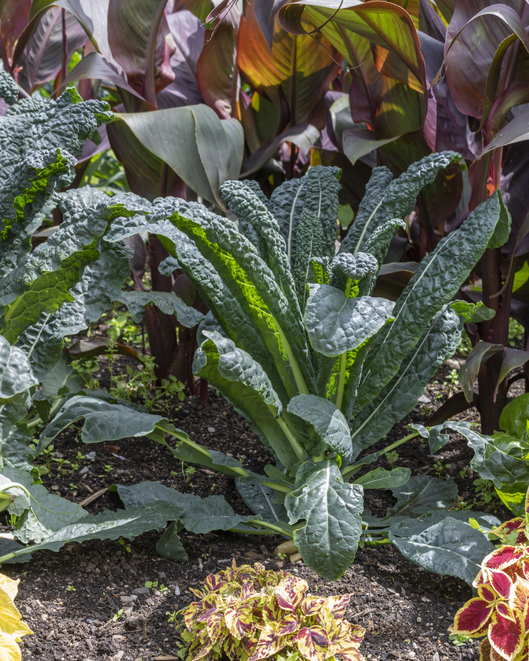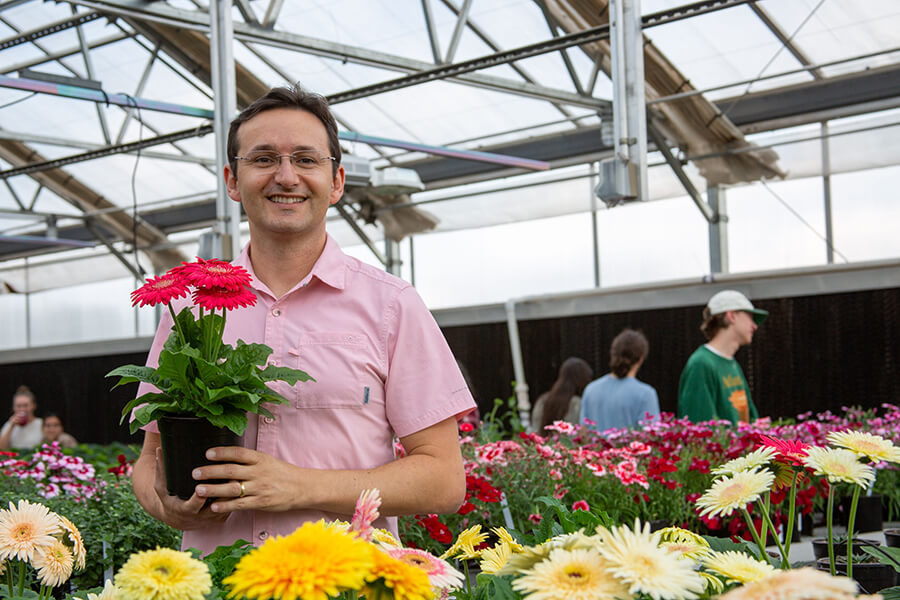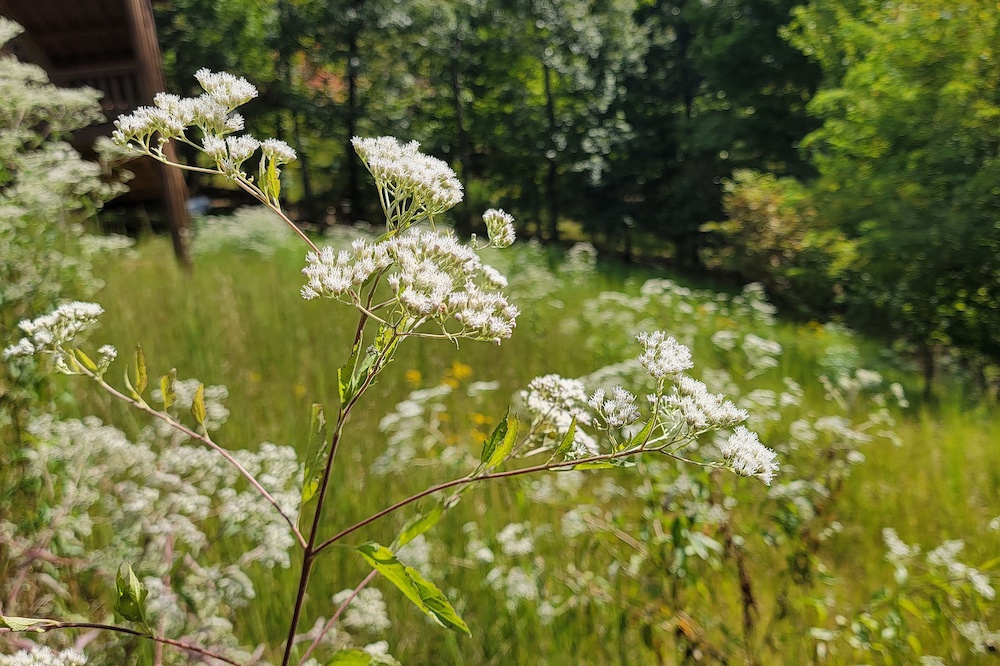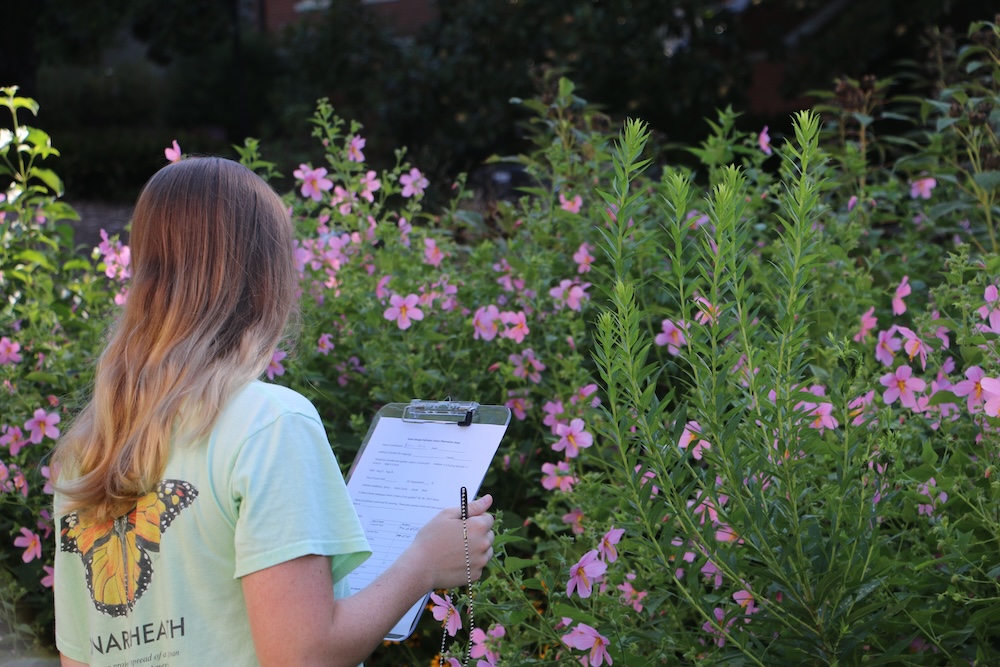.jpg)
Gardening is often described as an art and a science. And while this suggests a degree of nuance to gardening, it is also quite true.
For instance, fall is by far the best time to plant trees, shrubs and perennials in Georgia. There’s the science. How to arrange them as you plant, however, is absolutely art. Landscape design principles used to create an aesthetic garden space include color, form and balance, among others. Those gifted with artistic talent may use these by instinct, but I lack that gift. And those instincts. My lowest grade in school was art. Truly.
Designing my backyard is a hobby but a challenge. I think and plan and agonize, and after that I still rearrange most of if the following year. So when I come across advice that makes using those design principles a little easier, I use it. Of course, just like in other forms of art, there are many garden styles. My preferred garden style is a cottage garden aesthetic (please read as obnoxiously floral). So, predictably, all my favorite strategies are also justifications for planting more flowers. And I do plant a lot of flowers, but for different effects in the garden. And because … flowers.
Big, beautiful color
This past year our 50-square-foot iris bed bloomed in February. This meant we were able to enjoy the delicate blooms for almost a week before a hard frost decimated the flowers. The particular cultivar is probably not the best choice for us, but they are from my husband’s great-grandmother’s garden, so they are permanent residents. I love our hand-me-down flowers, but I really want more than a week from such a significant portion of our backyard blooms. To achieve this and keep our pass-alongs, I’m using a design strategy suggested by David Culp in “The Layered Garden.” He recommends stretching the season of your favorite flowers by planting cultivars with different bloom times.
This method won’t do much for annuals, which tend to bloom throughout a season, but this is great strategy for perennials and flowering shrubs. In the case of irises, there are multiple ornamental species and thousands (yes, thousands) of different cultivars. Some bloom early, but others may not bloom in our area until May. I am slowly mixing new irises in with mid- and late-bloom varieties with the hope I’ll have something blooming in that particular section of the garden from February through May.
Blooms are the easiest way to work with color in a design. Extending the time span of peak bloom will add more color overall, but I want that color to belong to a broader color palette. The later blooming irises will be blooming at the same time as other spring flowers: euphorbia, peonies, foxgloves.
Creating unity
.jpg)
Color is the most obvious design contribution of flowers, but another strategy is to create unity in small gardens. Unity is most often achieved through repetition of plants and colors. I once read a suggestion to repeat almost the same plant instead of repeating the same plant over and over. By adding different cultivars of a plant, with different heights but similar color, you can check the design principle of repetition off the list without, well, being too repetitive.
Creating a plant layout is similar to staging a class photo. Tall kids in the back, shorties in the front. Except in the garden you are planting at least three, if not more, of most things, so you have a lot of the same shorties and the same tall kids. The effect would be the same as if all the tall kids wore blue and all the short kids wore pink. Not a bad color combination, but the lines would be very distinct — not an engaging design. Formal gardens utilize a lot of straight lines to grand effect, but my backyard is not a chateau. Creating repetition at different heights gives you pockets of the same color, but in different planes. Instead of lines of color, you get groups of color as you repeat them through the garden bed.
In my backyard, the perennial garden bed is a transition between a lawn to a woodland garden, so a casual design makes that transition less stark. I have tall daisies (3 to 4 feet) and short daisies (less than 10 inches), with medium daisies scattered throughout the same perennial bed. Shasta daisies are another ornamental flower with a gazillion varieties (read: a lot of options) so it is easy to find one in the height you want for a certain space.
This strategy works well for flowering shrubs as well as perennials. As yards have gotten smaller, plant breeders have worked to make smaller plants to fit them. Loropetalums, butterfly bushes, abelias, hydrangeas, azaleas and crape myrtles all have a variety of heights and widths available. All of those have at least one 2- to 3-foot cultivar in addition to standard-sized versions and every size in between.
Texture, form and structure
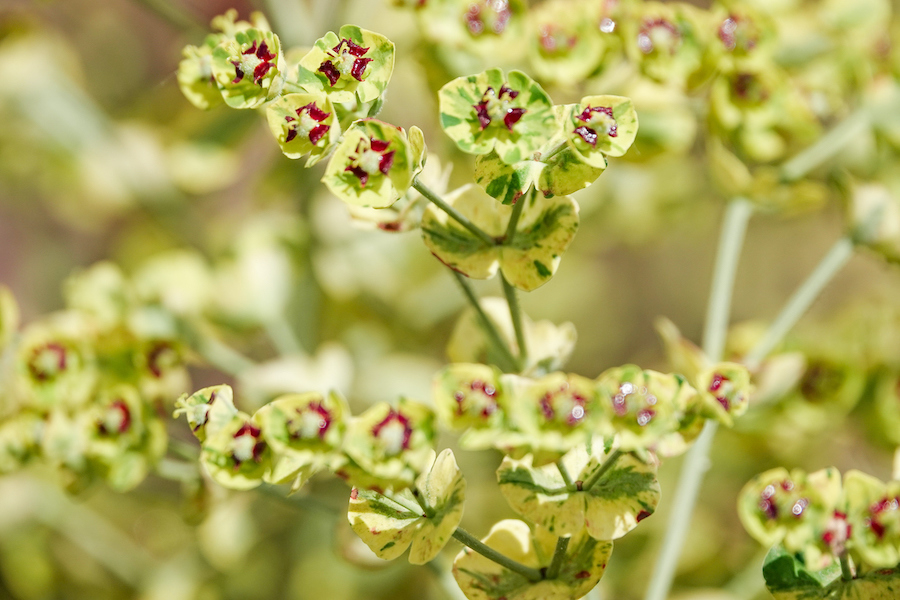
My last piece of design advice is mine. I’m sure I’m not the only one to have used it, but I didn’t read it in a book or magazine, or hear about it on podcast.
Broadleaf evergreens most often do the important work of providing year-round structure for the garden. Grasses and conifers are used to create contrast in texture, as well as add different shapes. There are good reasons to put evergreen shrubs, conifers and grasses in the garden, but I don’t. Well, I haven’t yet. Instead, I use plants that provide evergreen structure, or add variety in form and texture to my design that also provide floral interest. This strategy is all about using flowers for jobs that other plants are more traditionally selected for. That way you can plant even more flowers!
Right now, spurge is my favorite. More specifically, Euphorbia ‘Ascot Rainbow’ holds my affection. It is evergreen, has sage and lime foliage, and produces clouds of chartreuse blooms throughout the spring. Likewise, Kniphofia looks like a grass, but has funky flowers that inspired its common name, red-hot poker. Yucca are spiky and also have showy flowers, so they add a different form to plantings.
Sometimes my backyard is exquisite, always it is homey, but the process of making my garden engaging — editing, tweaking, digging up whole chunks and beginning again, planting a spot for the first time — is incredibly rewarding. Especially when the new flowers bloom. So I’ll keep looking for new strategies to push more moments in the garden year towards well-designed and indulgently floral. And planting more flowers. In the name of the art, of course.

